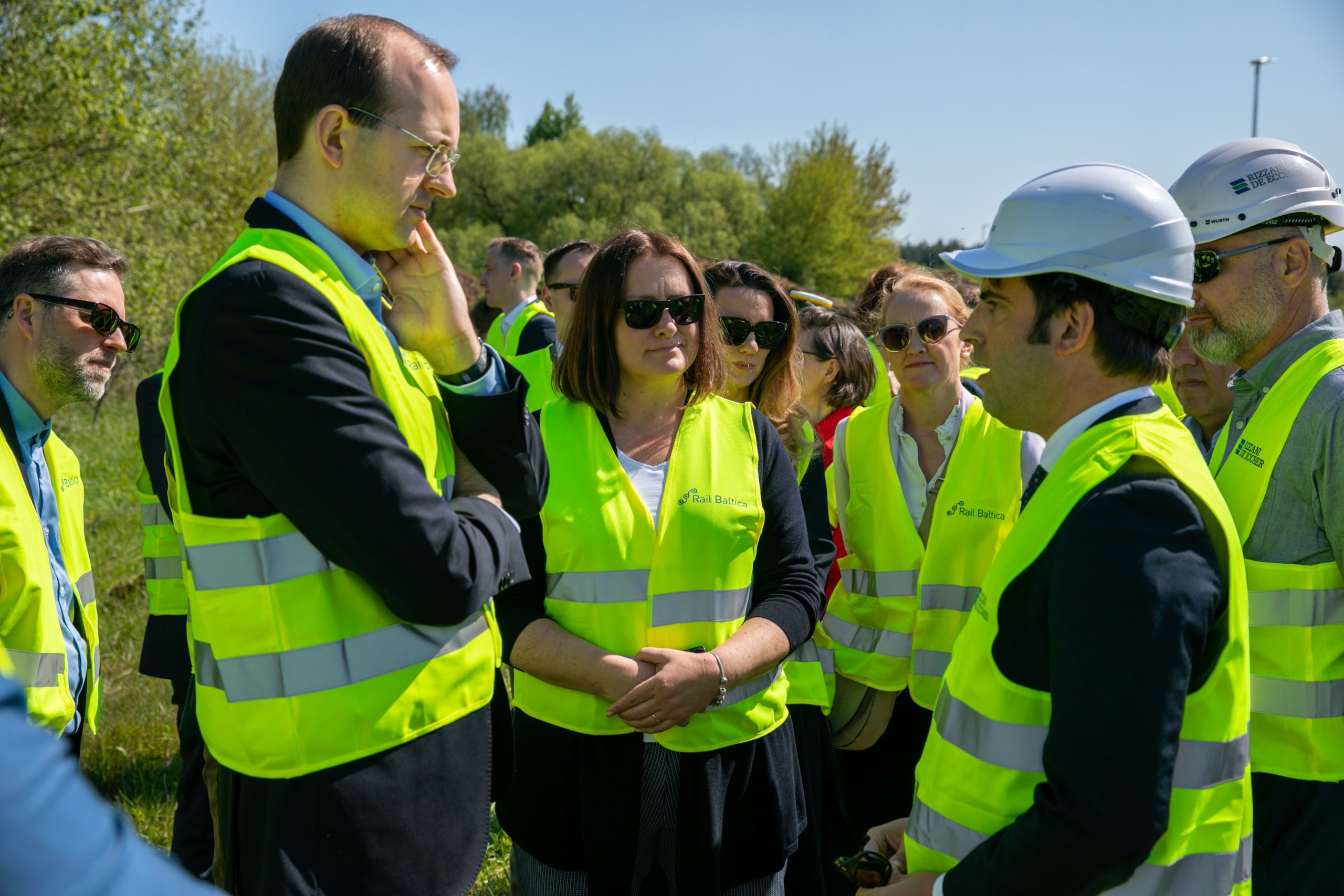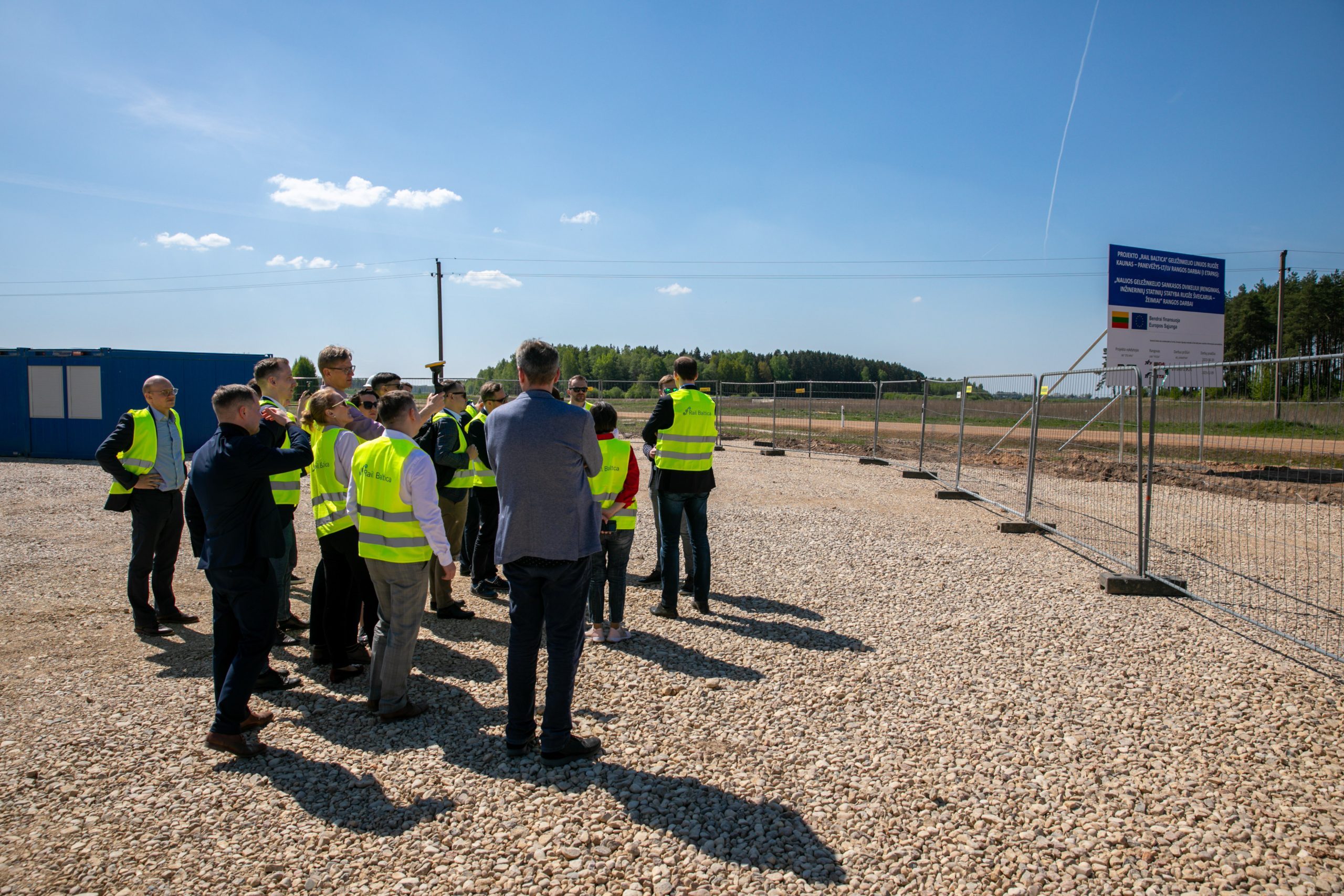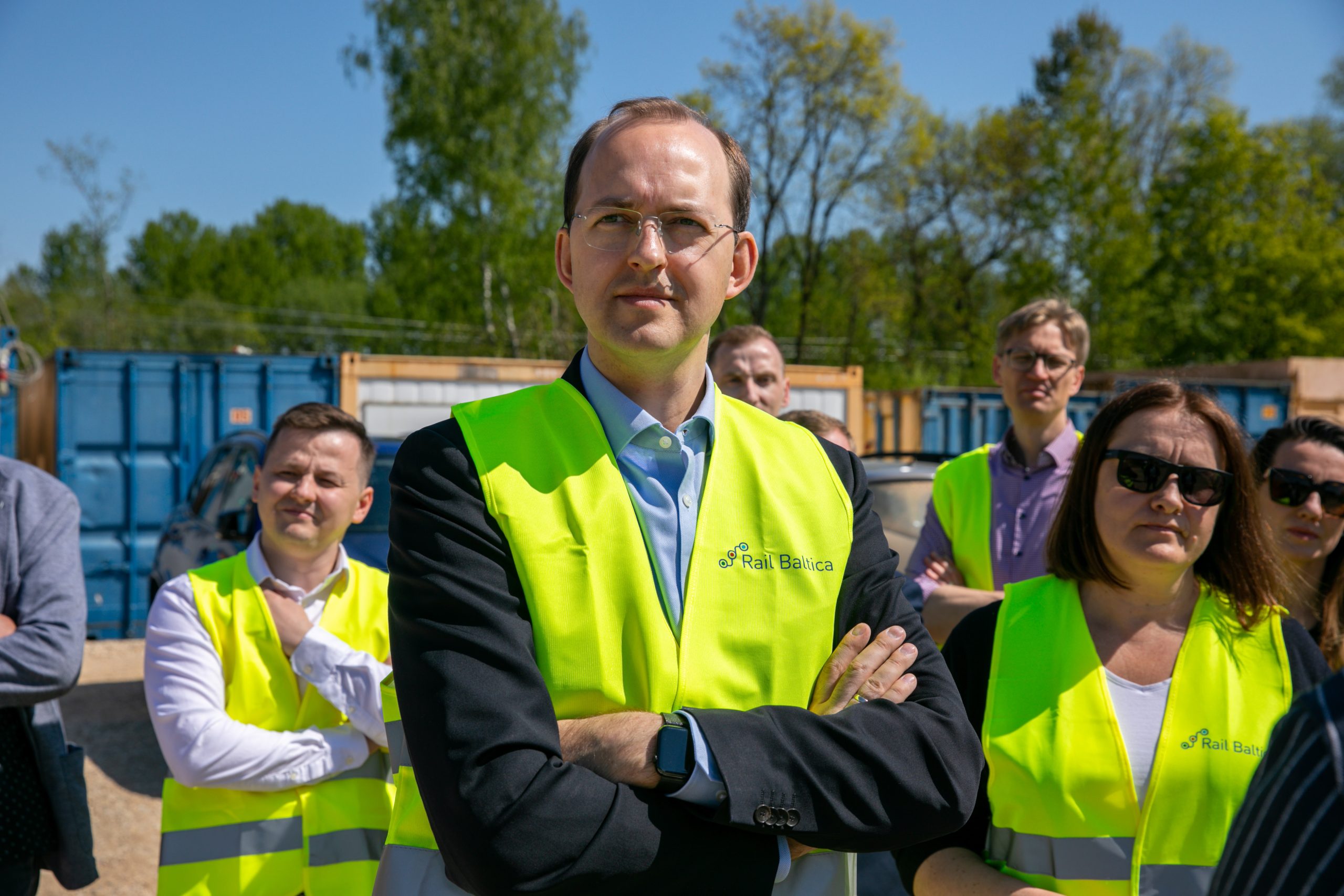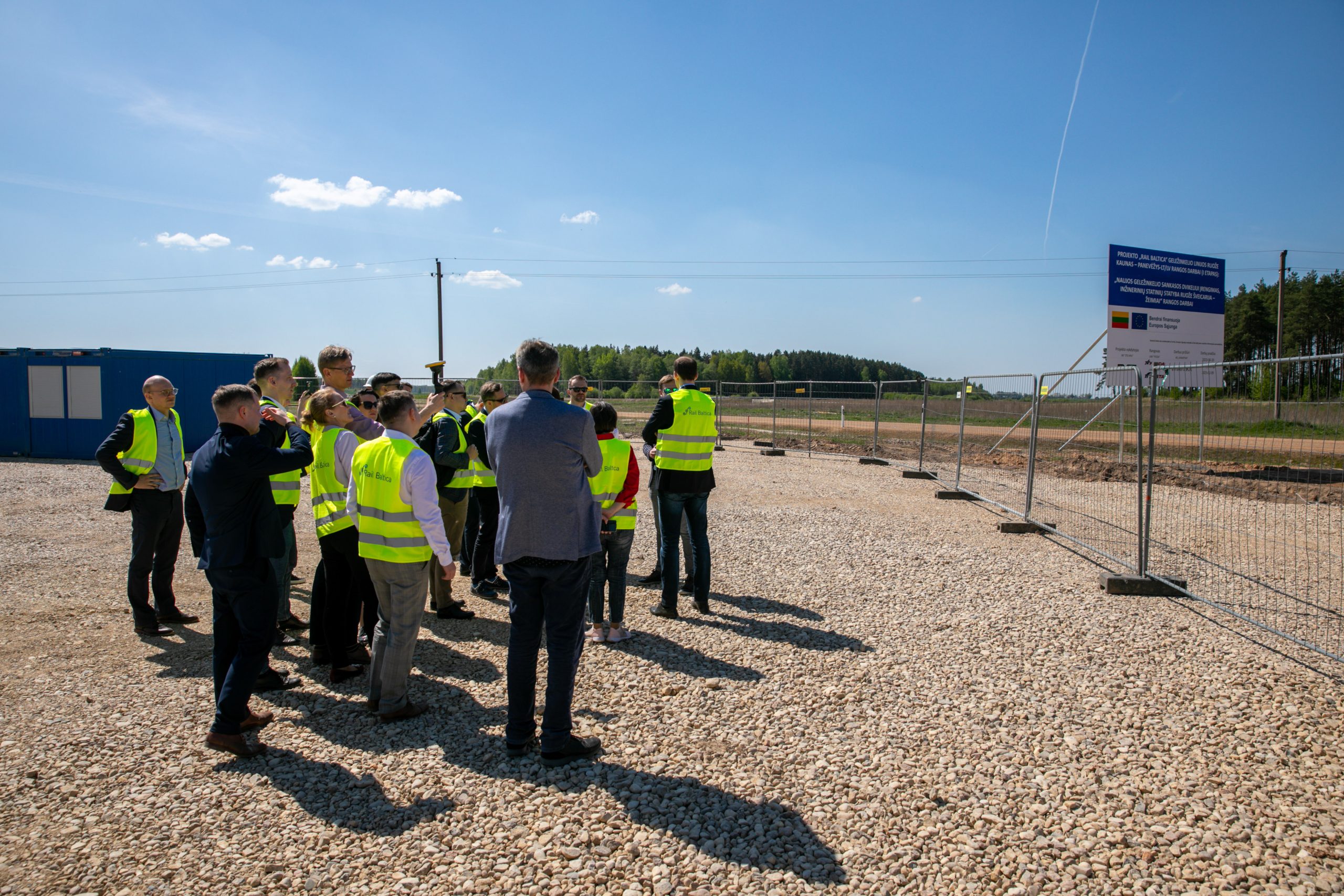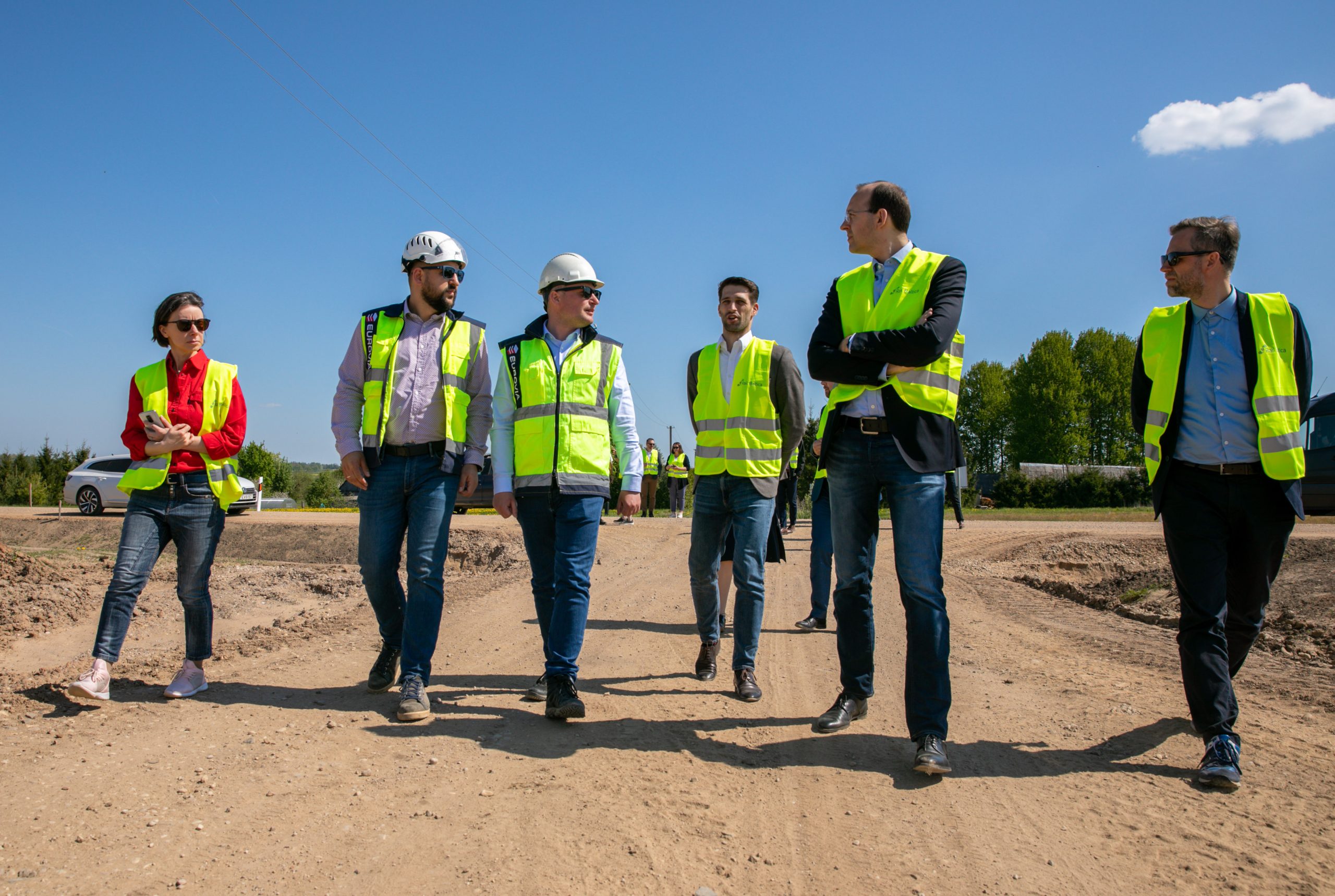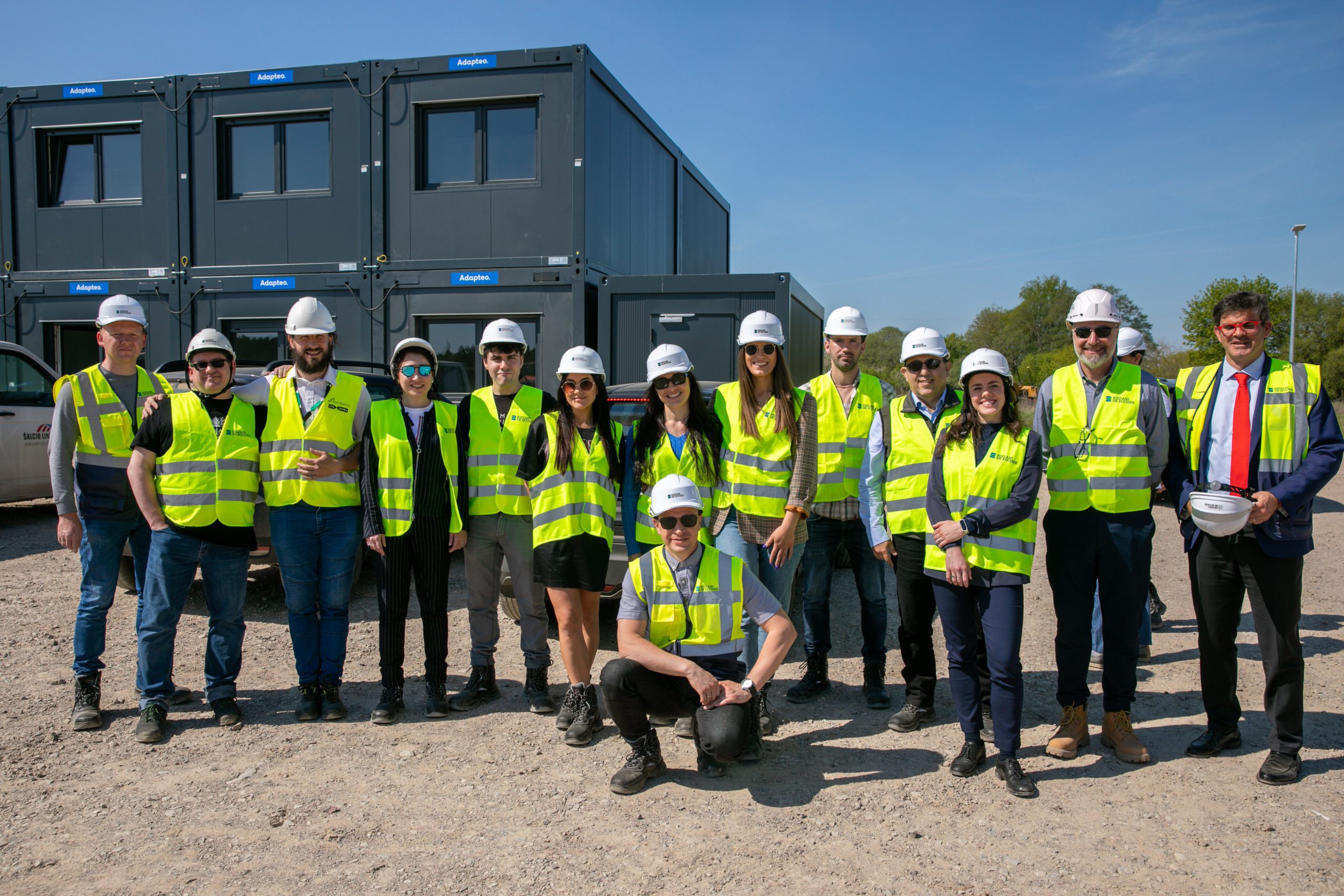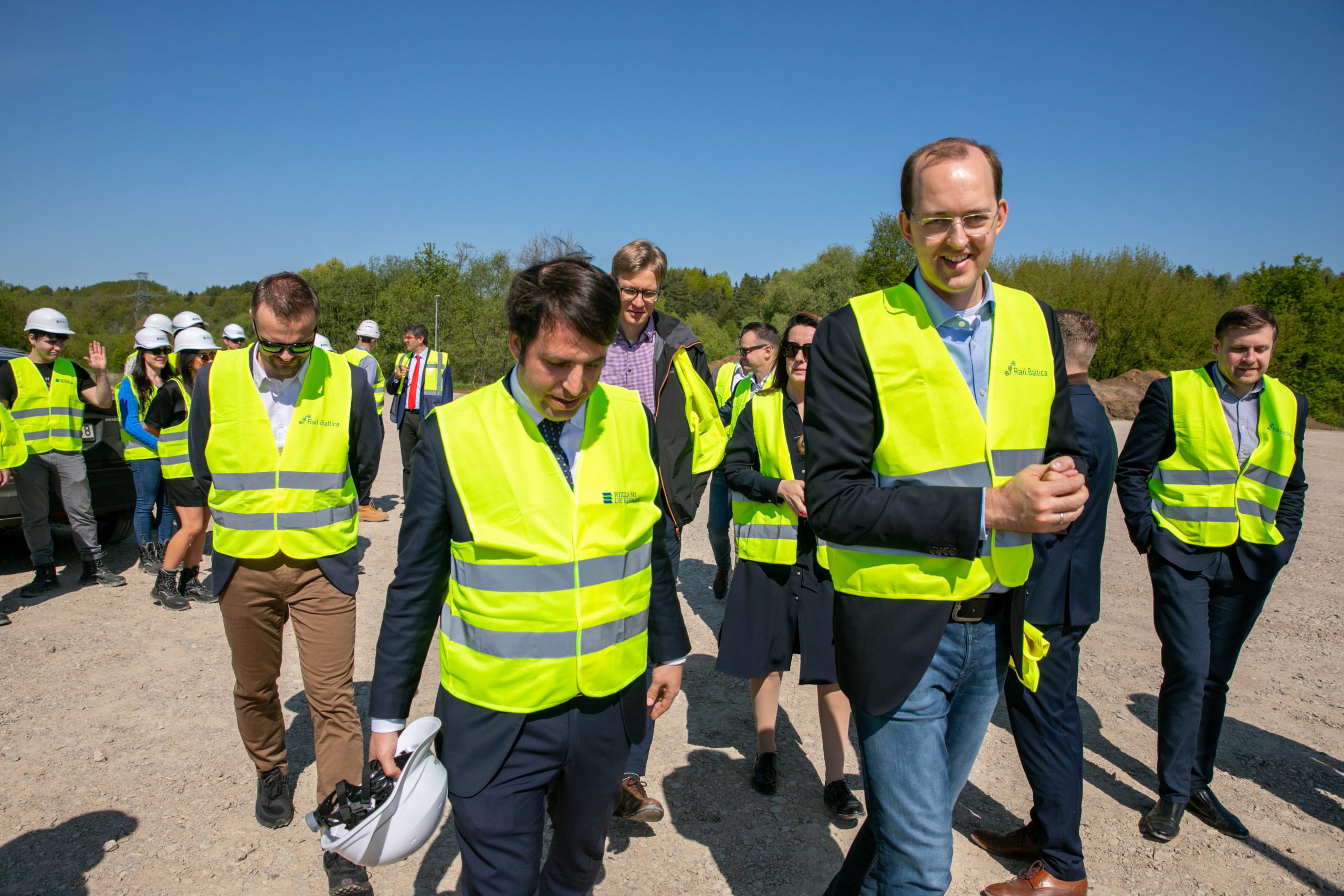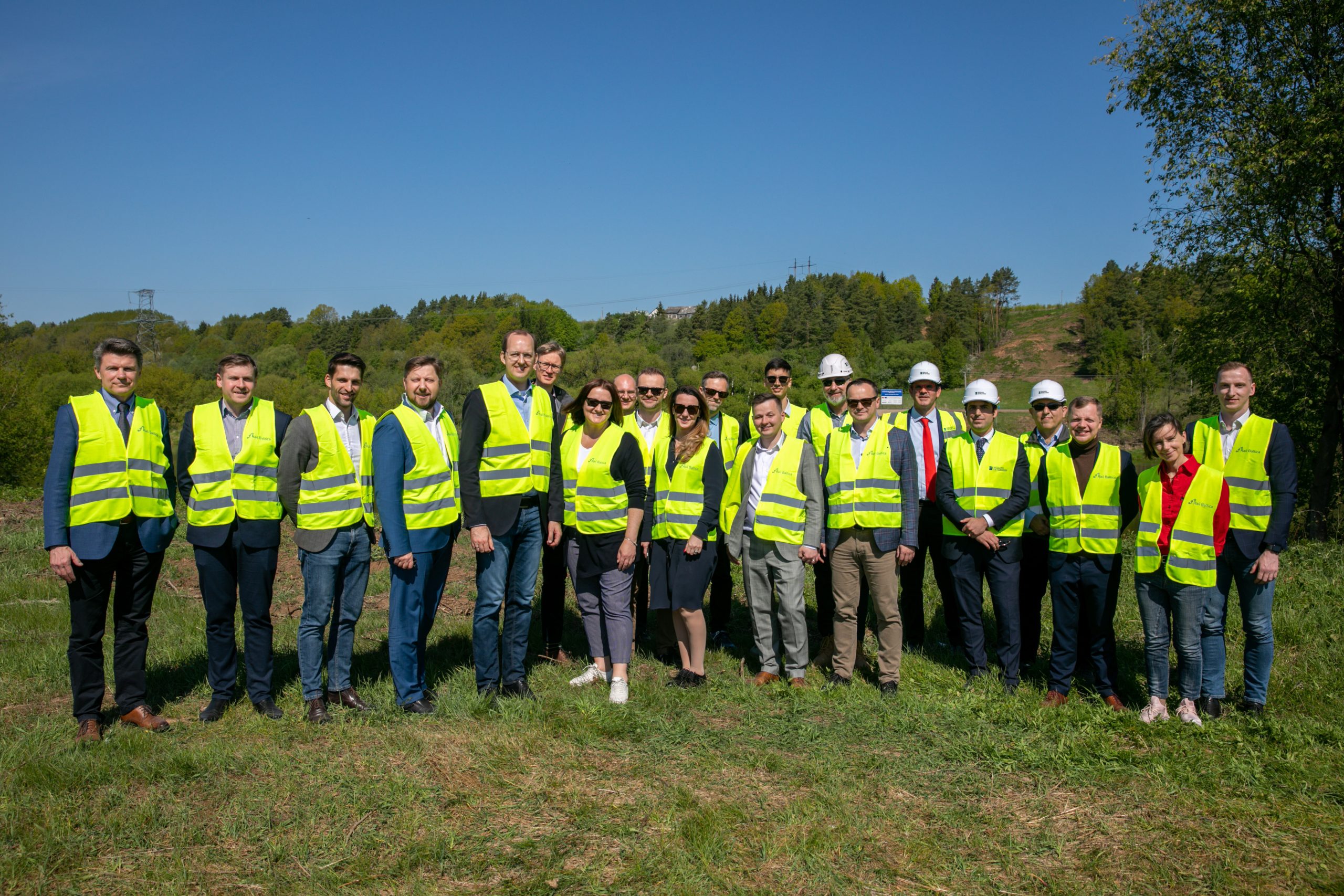This Friday, 12 May, Minister of Transport and Communications of Lithuania Marius Skuodis inspected the Rail Baltica project implementation work in Jonava District. In evaluating the inspected section from Kaunas to the Latvian border, the minister discussed ways to speed up the construction of the European gauge railway in Lithuania as soon as possible.
“Rail Baltica is a strategic project for Lithuania. We can see that the intensive first works towards the Latvian border are underway, and connecting roads are being built in several stretches, but the companies responsible for implementation of the project must move forward even faster. It is particularly important that by the end of 2024 most of the work on the section from Kaunas to Panevėžys is done and that we are ready for construction in other sections and facilities,” said M. Skuodis.
The minister met with the project developers – the heads of AB Lietuvos Geležinkeliai and AB LTG Infra, as well as representatives from Baltic joint venture RB Rail AS and the contracting companies – to discuss the current status of activities in the most mature section of Rail Baltica, from Kaunas to the Lithuanian-Latvian border, as well as what is next in line for the project.
Construction of the railway line will take place at full capacity in two sections: Šveicarija-Žeimiai and Žeimiai-Šeta, as well as construction of the longest bridge in the Baltic countries over Neris river. The technical documentation for the Neris bridge is currently being finalised. According to the companies implementing the project, preparation of the latter took much longer than planned due to the complexity of the project, but the main works for the construction of the railway bridge are set to begin this summer.
“Rail Baltica is a priority project, and its effective implementation requires non-standard solutions. One of which is the implementation of project activities in parallel so that several project activities of a completely different nature can be carried out at the same time, creating conditions for the smooth and expeditious transition from one stage of project implementation to another,” says LTG Infra’s Rail Baltica Management General Manager Dovydas Palaima, adding, “Not only the team working directly with the project participates in decision making – project partners and contractors are also actively involved.”
Currently, preparation and coordination of the technical design documentation required for construction of the beds and engineering structures in the Šveicarija–Žeimiai and Žemiai–Šėta stretches is being completed. The main construction will begin in these stretches in the coming months. Construction of access roads of local significance for cars is also under-way in these stretches – in one stretch, it is almost finished, and construction will begin very soon in the Žeimiai–Šėta stretch
Two additional contracts are planned to be signed at the end of this year for construction of the beds and engineering structures towards Latvia, in the Kaunas–Šveicarija and Šėta–Ramygala stretches.
„Development of high-speed train infrastructure in the region during force majeure has required extra time for planning and coordination. Despite challenges, the project implementers are committed to delivering a high-quality infrastructure project that will greatly benefit the region. We are working diligently to overcome any obstacles and ensure that the project is completed as soon as possible,“ said Irmantas Butkauskas, Head of Lithuanian Branch at RB Rail.
In other sections – the Kaunas junction station, Kaunas–Vilnius and Kaunas–Lithuanian-Polish border – as well as in objects of regional significance, territorial planning activities are intensively under-way, and special plans are being prepared. All of the special plans for the railway tracks are expected to be approved by the end of this year.
This year, there are also plans to sign project preparation and design service contracts for land acquisition for public purposes for the main line (Kaunas–Vilnius, Kaunas–Lithuanian-Polish border, Kaunas junction station). At the end of this year or the beginning of next, with approved special plans and service contracts, land acquisition for public purposes and design activities will begin in these sections.
Also, this year, it is planned to sign design contracts for the Kaunas and Panevėžys infrastructure maintenance depots, the Kaunas passenger station territory infrastructure, the Vilnius junction station, and regional stations and their connections in the Kaunas–Vilnius stretch.
Rail Baltica is the largest railway infrastructure project in the modern history of the Baltic States and will result in a fully electrified double-track European standard-gauge railway connecting Warsaw, Kaunas, Vilnius, Panevėžys, Riga, Pärnu and Tallinn.
The total length of Rail Baltica in the Baltic States is 870 km, with 392 km in Lithuania, 265 km in Latvia and 213 km in Estonia.

